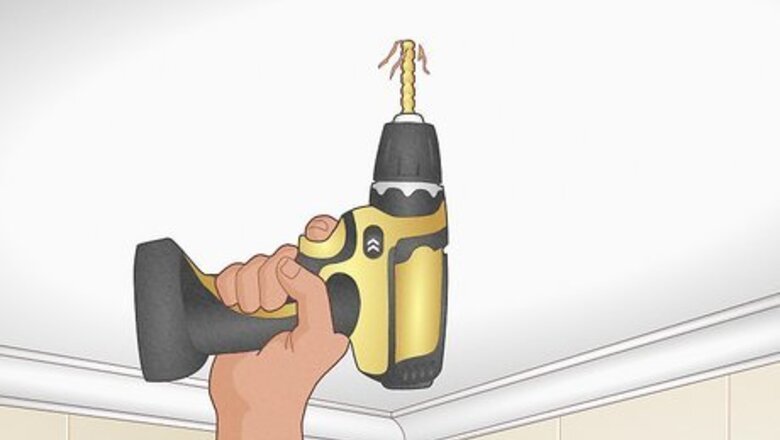
views
Installing a New Bathroom Exhaust Fan
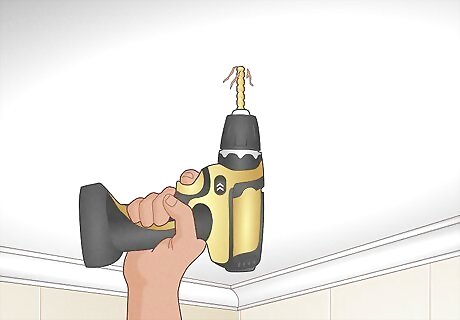
Drill a reference hole with an extra-long ⅜ inch spade bit. Use your power drill to create a reference hole in the ceiling where you’d like to install the vent fan. Measure the vent fan’s housing with a tape measure or use a piece of cardboard. Climb into the attic, locate the reference hole, and clear away any insulation around it. Use the fan’s housing measurements to ensure it will fit in the chosen spot between two joists. Generally, bathroom fans should be installed at the center point between your shower and toilet for optimal ventilation. If you live in an apartment building, you may be unable to access an attic or roof for proper ventilation. In this case, you may be better off with an exhaust window fan that can slip into the frame of your bathroom window.
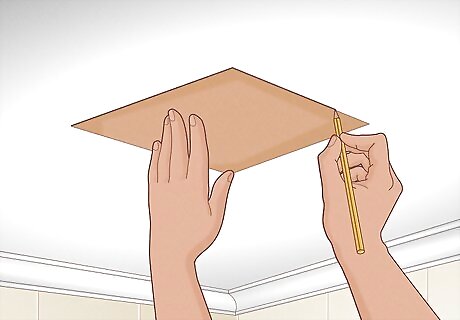
Use a framing square and a pencil to mark the ceiling. Once you return to the bathroom, measure the fan’s intake port using a tape measure. This is the front part of the fan that takes the air in. Mark the outline of the fan’s intake port on the ceiling using the measurements you just took. These will help you cut the appropriate size hole.
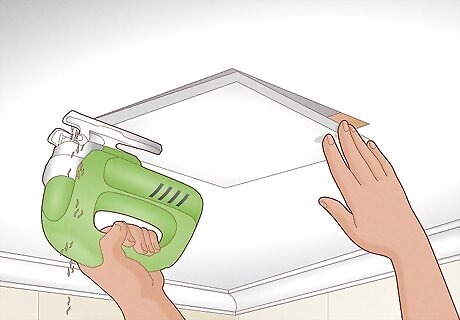
Cut the intake port hole using a jigsaw. With the jigsaw, follow the pencil markings. Use your free hand to support the cutout and gently lower it to the flow. This will help avoid pulling any additional pieces of drywall or plaster with it. Wear safety goggles and a respirator while sawing through plaster and drywall to protect your eyes and lungs. If you don’t have a jigsaw, use a reciprocating or drywall saw.
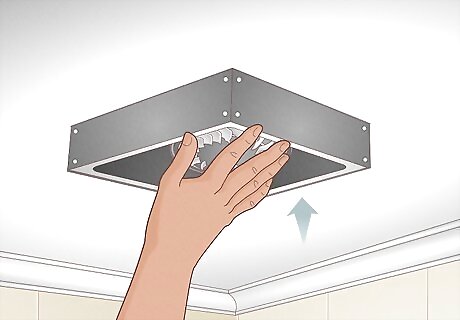
Place the exhaust fan in the position of the cutout. Return to the attic and attach a 4-inch, 90-degree duct elbow using foil duct tape to the appropriate outlet port. Aim the elbow straight up, facing the ceiling of your attic or roof. Remove the knockout hole on the side of the exhaust fan’s housing and attach a cable connector. Slide the four metal brackets into the tabs hanging from the sides of the vent fan. Then, center the fan over the ceiling hole and lower it into place. Make sure any connection points are oriented correctly.
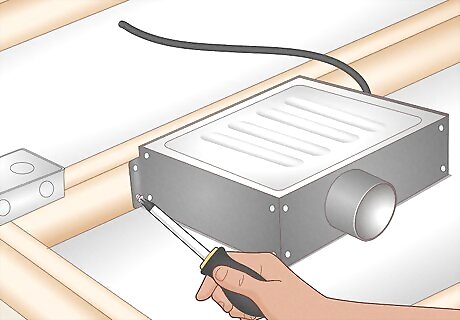
Secure the fan to the joists. Once the fan is positioned correctly, extend each metal bracket until it reaches the joists on either side of the housing unit. Use 1 ½-inch drywall screws to firmly secure each bracket end to the joist. Then, take the length of the flexible duct pipe and attach it to one end of the 90-degree duct elbow using foiling duct tape. Run existing or new electrical cables through the connector on the fan housing. Secure the cable by tightening the screw on the connector. If your fan includes a light, you may need to use a three-wire cable.
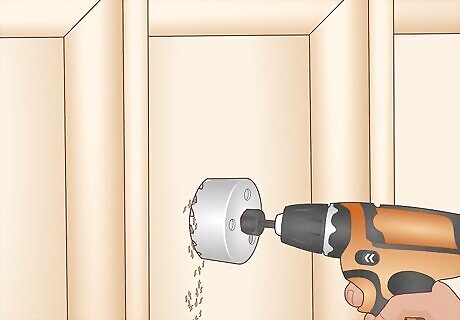
Find a suitable exit point and cut out a duct hole. For an exhaust fan to work, it must efficiently vent out the air and moisture from your bathroom to the outside. Be sure your location is between two wall studs and within 6 feet of the vent fan. Then, cut out the duct hole using a 4-inch hole saw. If your exit point is the roof, draw an appropriate-sized circle on the inside. Use a reciprocating saw to cut it out. Then, get onto the roof using a ladder. Remove any shingles or similar roof coverings that may block the newly cut hole. Generally, you want to choose the shortest, straightest route, like a side wall or roof, whichever is most convenient. Venting directly into your attic instead of outside would promote mold growth and other harmful bacteria that may cause structural damage to your home.
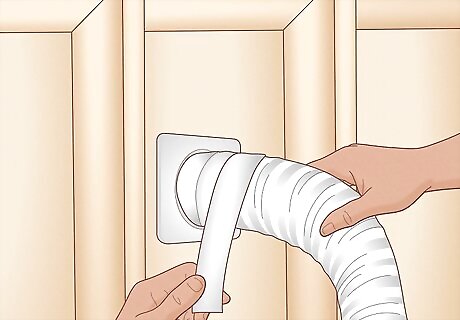
Attach the exhaust duct to the vent cap. For a sidewall exit point, secure the vent cap to the outside wall where you’ve made your cut out. Then, grab the free end of the flexible exhaust duct and gently stretch it to the wall. Attach the duct to the vent cap with foil duct tape to keep it in place. If your exit point is on the roof, after cutting out your duct hole, install the vent cap using roofing cement and roofing nails. Replace any loose shingles or roofing materials.
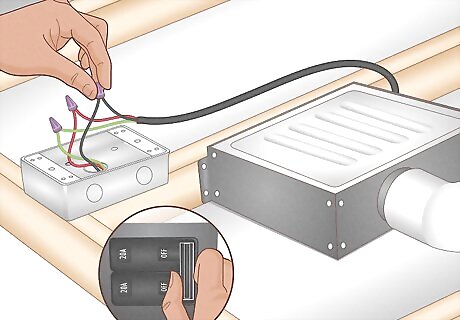
Shut off power at your circuit breaker, then open the housing unit to wire the connections. Make sure you shut off the power before proceeding with this step. Open up the housing unit and pull the fan wires from the electrical splice unit. Strip ⁄8 inch (1.6 cm) back from each of the wires on the fan and electrical cables you inserted earlier. Then, twist the same colored wires together and add the connectors. Wrap bare copper wire around the green grounding clip or screw and tighten it to secure. Place the wires back in the electrical splice unit and reattach the cover. Usually, the colored wires will be white to white, black to black, and red to red. Make sure to read the manufacturer’s instructions and double-check the power is off before proceeding. If you don’t feel confident about doing the wiring yourself, don’t hesitate to call a licensed electrician to install the fan or inspect your work when you’re done. If dealing with aluminum wiring, note that it requires special handling and any electrical work of this kind should be performed by a professional.
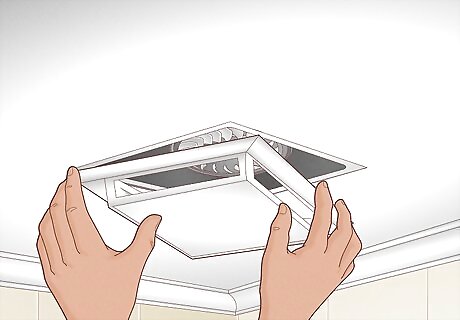
Install the grille by slipping it into place. Plug the blower motor into the electrical receptacle inside the housing. Then, secure it with the screws provided with your exhaust fan. The plastic grille can be slipped into place using its mounting wires in the housing unit. Make sure it sits flush against the ceiling. You may need to spread the mounting wires a little to create more tension.
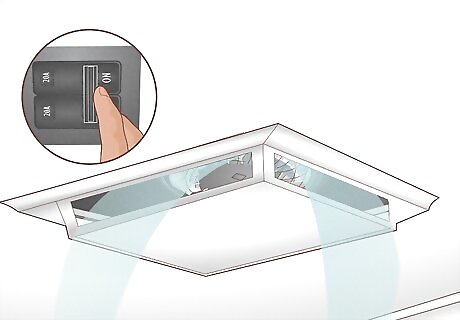
Flip the bathroom circuit breaker into the “ON” position. To make sure your brand-new bathroom exhaust fan is working correctly, turn the power back on from the circuit breaker. Flip your light or fan switch to power the exhaust fan. Now your bathroom is vented!
Replacing a Bathroom Exhaust Fan
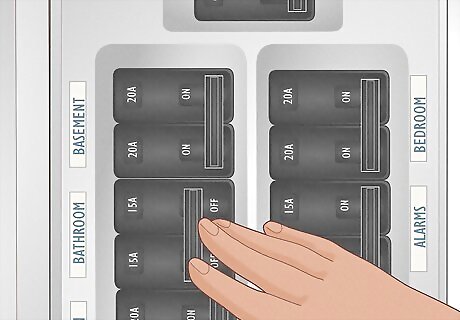
Shut off power to the bathroom using the circuit breaker. If you’re replacing an old fan, locate your home’s circuit breaker box. Flip the bathroom breaker to the “OFF” position to shut off any electricity running through. Generally, circuit breaker boxes are in a home’s basement, garage, or utility closet. Your circuit breaker may be in a central location for apartment buildings, like a hallway, living room, or laundry room.
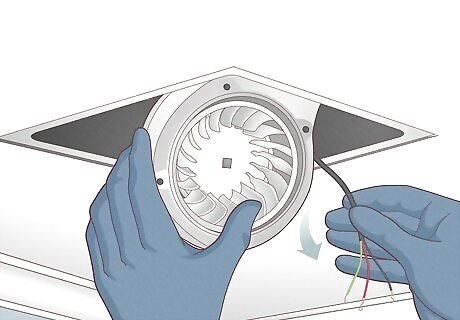
Disconnect the motor and wiring. Using a screwdriver, remove the grille from the old exhaust fan. Unplug the motor blower assembly from the housing unit, open the electrical splice unit, and carefully pull out the wires. Remove connectors by untwisting the wires connected to them. Then, loosen the cable clam to free the electrical cable from the fan. You may want to put on a pair of electrical gloves, safety goggles, and a respirator. You may be shocked at the amount of dirt and debris that may fall out of the old exhaust fan!
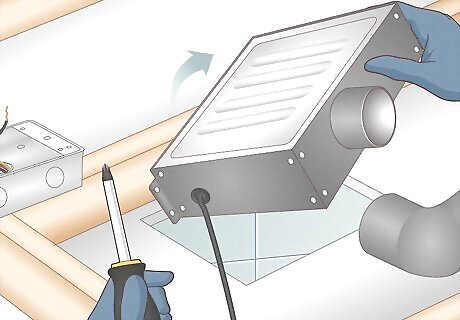
Detach the duct pipe from the housing and vent cap. Return to the attic to remove the housing. Pull the electrical cable and wiring free from the housing unit. You’ll need to use a power drill to remove the screws securing the old fan’s brackets to the joists, then lift the old fan from the ceiling. If you can’t access the attic, unplug the fan and slightly lift the intake port from its clamps on either side of the frame. You may find a screw; if so, unscrew it.
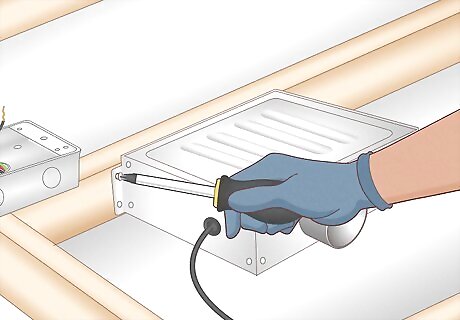
Install the replacement fan by screwing it in. If you’re using a similar-sized or updated model of your existing exhaust fan, go into the attic and lower the fan into the preexisting hole. Slide out the extendable mounting brackets and secure them to the joists using your power drill and 1 inch (2.5 cm) drywall screws. If your new fan is bigger, you’ll need to trace the outline of your new fan and cut out the outline using a drywall saw. If your new fan is smaller, you can caulk around the edges of the housing unit to fill in any gaps. If you don’t have access to the attic, follow the manufacturer’s instructions for installation. Generally, this means snapping the new fan into place or screwing it in.
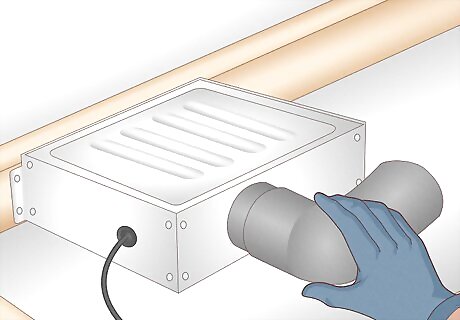
Attach the 90-degree duct elbow to the exhaust port. Once the new fan is in place, connect the 90-degree duct elbow using sheet metal screws. Then attach a new 4 to 6 inch (10.2 to 15.2 cm) duct pipe to the duct elbow. It is possible to use the duct pipe from the old fan, but if it is less than 4 inches (10.2 cm) in diameter you will need to install a duct pipe reducer before reattaching the pipe. However, be aware that using a smaller, older duct pipe will prevent the fan from working as efficiently.
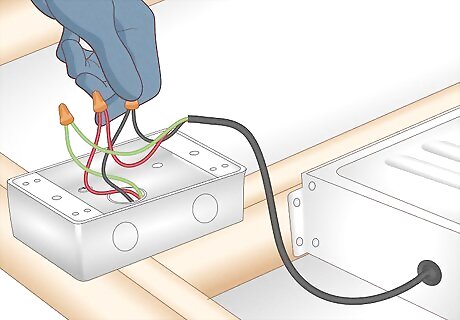
Insert the electrical cable through the connector. Secure it with a cable clamp. Then, open the electrical splice box and pull out the fan’s wires. Attach the electrical wires by twisting the same colored wires and slipping the wire connector on. Wrap the bare copper wire under the ground clip or screw and tighten it in place. Afterward, tuck all wires back into the electrical splice box and replace the cover.
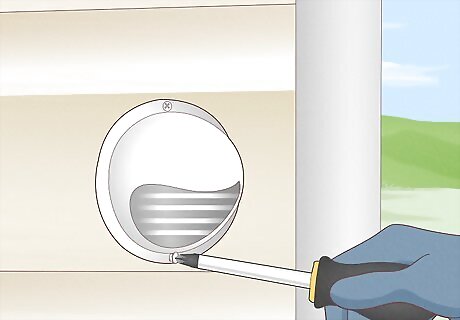
Replace the vent cap (optional). If you replaced your old duct pipe with a newer, bigger pipe, install a larger vent cap on your roof or sidewall. Use a saw to enlarge the opening to the size of the new duct pipe. Pull the end of the duct pipe through the hole until ⁄4 inch (1.9 cm) extends beyond the roof's edge or sidewall. Secure in place with sheet metal screws and seal around the edges with caulk. Secure the new vent cap over the end of the duct pipe. If the vent pipe is on the roof, replace any shingles that may have come loose.
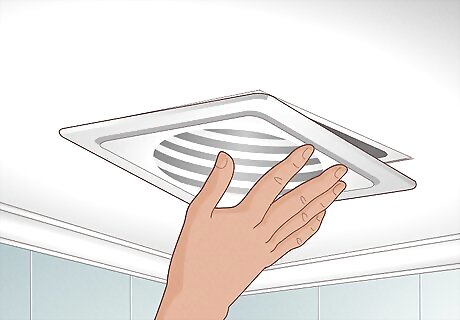
Attach the new grille. Return to the bathroom, install the motor blower assembly by plugging it into the receptacle, and screw it in place. Attach the decorative grille, then resume power in your bathroom to ensure it works properly.

















Comments
0 comment